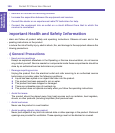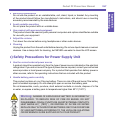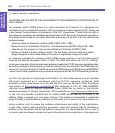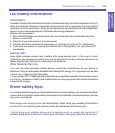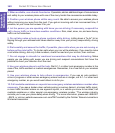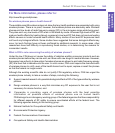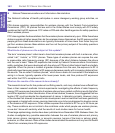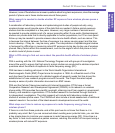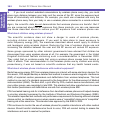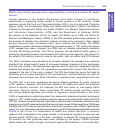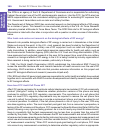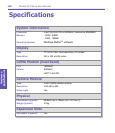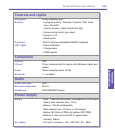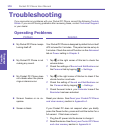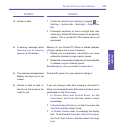
Appendix A
Maintaining
Pocket PC Phone User Manual164
Appendix A
Maintaining
Pocket PC Phone User Manual
165
n If you must conduct extended conversations by wireless phone every day, you could
place more distance between your body and the source of the RF, since the exposure level
drops off dramatically with distance. For example, you could use a headset and carry the
wireless phone away from your body or use a wireless phone connected to a remote antenna
Again, the scientific data do not demonstrate that wireless phones are harmful. But if
you are concerned about the RF exposure from these products, you can use measures
like those described above to reduce your RF exposure from wireless phone use.
What about children using wireless phones?
The scientific evidence does not show a danger to users of wireless phones,
including children and teenagers. If you want to take steps to lower exposure to
radio frequency energy (RF), the measures described above would apply to children
and teenagers using wireless phones. Reducing the time of wireless phone use and
increasing the distance between the user and the RF source will reduce RF exposure.
Some groups sponsored by other national governments have advised that children be
discouraged from using wireless phones at all. For example, the government in the United
Kingdom distributed leaflets containing such a recommendation in December 2000.
They noted that no evidence exists that using a wireless phone causes brain tumors or
other ill effects. Their recommendation to limit wireless phone use by children was strictly
precautionary; it was not based on scientific evidence that any health hazard exists.
What about wireless phone interference with medical equipment?
Radio frequency energy (RF) from wireless phones can interact with some electronic devices. For
this reason, FDA helped develop a detailed test method to measure electromagnetic interference
(EMI) of implanted cardiac pacemakers and debrillators from wireless telephones. This test
method is now part of a standard sponsored by the Association for the Advancement of Medical
instrumentation (AAMI). The nal draft, a joint effort by FDA, medical device manufacturers, and
many other groups, was completed in late 2000. This standard will allow manufacturers to ensure
that cardiac pacemakers and debrillators are safe from wireless phone EMI.
FDA has tested hearing aids for interference from handheld wireless phones and helped develop
a voluntary standard sponsored by the Institute of Electrical and Electronic Engineers (IEEE).
This standard species test methods and performance requirements for hearing aids and wireless
phones so that no interference occurs when a person uses a “compatible” phone and a “compatible”
hearing aid at the same time. This standard was approved by the IEEE in 2000.
FDA continues to monitor the use of wireless phones for possible interactions with other medical
devices. Should harmful interference be found to occur, FDA will conduct testing to assess the
interference and work to resolve the problem.



